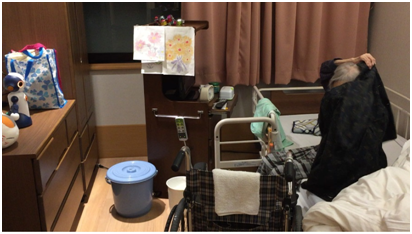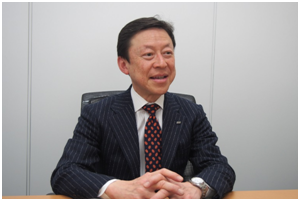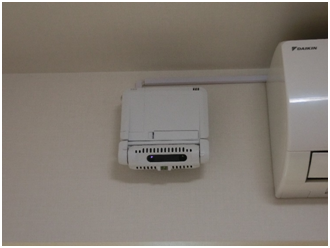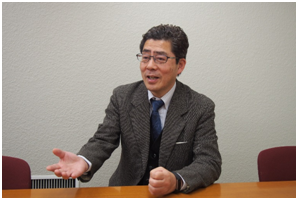The introduction and use of Long-term Care Technology
Technologies are increasingly being used in nursing care settings, such as for transferring from a bed to a wheelchair, monitoring sensors, and for communication. However, what kind of preparations are necessary to introduce technologies into actual nursing care sites? In addition, what effects are these technologies having on the sites into which they are introduced? In this page (or this manuscript), we will introduce the current situation of introducing technology into nursing care sites, the preparations for its introduction, and case studies and effects. (The contents and titles are as of March 2017.)
Before introducing a technology, first think of “The best care for each person.”
In introducing Long-term Care Technology, most people may think that introducing it will make nursing care easier. However, Shinji Funada of the Japan Association of Certified Care Workers says, “The use of technology will not continue if we just introduce and look at it from the viewpoint of making things easier for caregivers.”
Case study of an introduction of Long-term Care Technology (1):
Approaching and monitoring
At the facility where I work, we incorporate the ICF concept into our assessments, and we always start with re-learning the ICF (the International Classification of Functioning, Disability and Health) before introducing a technology. From the viewpoint of “what we should do to enable a care receiver to live as he/she wishes,” we ascertain the big picture of the care receiver, make a care plan, and use the technology as one part of the support and its environmental factors.
For example, a woman came to our facility after losing the will to live and was hardly eating at all, saying “I am so sorry to be receiving all of this.” When we talked with her family, we learned that she was originally a caring and hardworking woman. Based on the hypothesis that she was feeling reticent about being cared for, we decided to make a care plan that would help her to re-acquire her previous role of being helpful to others.
Until that point, she needed support to get up, get dressed, and be transferred to a wheelchair, but we then used technology to call out for her to start activities, including when to get up. The robot called out to her in advance to allow her to move at her own pace and on considering the preparation time before the start of activities based on her life pattern. This gave her more time to get ready on her own, and by the time a staff member actually approached her, she was able to get up on her own. She had been too reserved to get up at her own pace when approached by staff. It was also beneficial that the staff were able to assess her safety and potential for independence while checking her movements on a tablet. The sensor detected her movements when she got up and alerted the caregivers so that risks could be avoided. Furthermore, not only was she able to get up on her own, but the video activated by the sensor also showed her putting on a jacket that was left by her side. So, we decided to let her change clothes at her own pace. After only one month, she was able to get up, get dressed, and transfer to a wheelchair all by herself. She also started to walk with a walker with staff only watching over her. This increased activity in her life also led to her motivational behavior of folding laundry, which she was good at in the past. She was then able to do the folding task smoothly, and as a result, she re-acquired the role of “being helpful to others” and regained the energy to live.
Case study of an introduction of Long-term Care Technology (2):
Monitoring sensor
ORIX Living, which runs nursing care facilities throughout Japan, has jointly developed with a sensor manufacturer a system that uses sensors to detect residents’ movements and to prevent them from falling. By registering the location of a bed, the system detects the resident’s movements and alerts a caregiver’s tablet or a smartphone if it detects any unusual or dangerous movement. Caregivers can see the residents’ activities as images, while also considering their privacy.
The introduction of this system has succeeded in reducing the fall rate by half. However, Etsuaki Morikawa, President of ORIX Living says, “When we first introduced the system, the alerts went off many times a day.” He emphasizes that it is necessary not just to introduce a system, but also to determine how to use it based on what kind of plan.
Advantages of Long-term Care Technology
As mentioned briefly in the case study in the previous section, we can summarize the advantages of introducing technology in nursing care as follows.
Data can be acquired
Some robots and sensors can acquire data on care receivers. By analyzing this data, such as what time they wake up and when they are at high risk, it is easier to make a care plan that is compelling and appropriate for them. It is also easy to share information among many staff members.
Change from care dependent on personal knowledge to standardized care
Introducing technology can standardize nursing care that used to be performed while being dependent on personal knowledge. For example, ORIX Living has introduced transfer lifts to all its facilities. When introducing them, classroom training was provided for caregivers, explaining why transfer lifts are necessary and how they are to be used. This has helped standardize transfers at each facility, enabling caregivers to reduce their back pain and focus on providing other services.
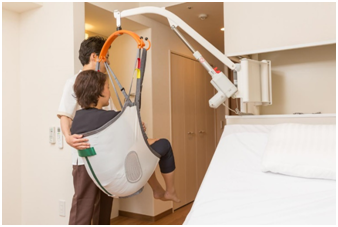
<A transfer lift installed at a facility>
Encourage the independence of care receivers
Another advantage of this technology is that care receivers do not have to worry about caregivers. Caregivers sometimes find it difficult to wait for the pace of the care receiver and tend to give them a hand. Also, the care receiver may become reserved to try to do things by his or herself, and ask to do everything by caregivers. Technologies will encourage the independence of care receivers and help them expand the range of activities that they can do by themselves.
Potential of the use of technology for home care
We have mainly introduced the use of technology in nursing care facilities, but we expect to see the greater use of technology for home care in the future. The technologies that are considered easiest to introduce first for home care are “monitoring technologies” and “sensors.” Mr. Morikawa, President of ORIX Living says, “Nursing care is something that we do to improve people’s lives, so it is necessary to first learn about their lives and obtain information.” There are many sensors available, such as for safety checks and monitoring, and some are inexpensive.
In addition, there are many situations in home care in which the person is required to move by themselves. Professor Yukio Honda of the Osaka Institute of Technology says that walking assist robots could be useful for home care, explaining that “The Long-term Care Technology market is still small, but the key to its expansion is how it will be introduced into home care settings.”
Mr. Funada says that there are an increasing number of sensors in the toileting field, stating that “Many care receivers do not want to be cared for in the toileting field. We hope that the use of technology in this field will increase.”
For technologies to become more widely used in the nursing care sites
Although there are now many types of Long-term Care Technology being developed and demonstrated, there is still some way before their use becomes widespread. For Long-term Care Technology to become more widely used, first it is essential that nursing care sites change. Mr. Funada emphasizes that “There is still a stereotype that caregiving is best done by people. Care should be as little as possible, and attention should be paid to increasing what care receivers can do by themselves.” Also, Mr. Morikawa, President of ORIX Living says, “Even if we just introduce a technology, that does not mean we will be able to master it. Technology should be introduced as part of the trend to improve the tasks onsite and to promote ICT. It is important to be aware that technology is needed not for caregivers, but for care receivers.”
Education to caregivers is also important. When ORIX Living introduced the transfer lift, it provided classroom training to thoroughly explain why it was necessary and how it should be used. Thanks to this, its introduction went smoothly. Thorough training is also helpful for the smooth introduction of Long-term Care Technology. In addition, Professor Honda points out that if a qualification system or a master system for Long-term Care Technology is established in the future, its use will become even more widespread.
Furthermore, it is also effective to disseminate information from the field where the technology is actually being used. In addition to the various demonstration case studies currently available to the public, if communication can be made among users by summarizing user reviews or exchanging information via SNS, we may see a major trend of technologies being introduced in the near future. Professor Honda also believes that it is necessary to avoid creating barriers between caregiving and daily life, stating that “We should not develop Long-term Care Technology just for caregiving. If the number of situations and population in which the technology is used increases, such as by using the technology used in daily life also for nursing care, the market will expand and people will become more familiar with it.”
Inquiries about Long-term Care Technology
If you are interested in or would like to try Long-term Care Technology, you can contact the facilities that are using technologies or the manufacturers that develop and sell them. Your local government may also be able to provide you with information on the introduction of Long-term Care Technology.

